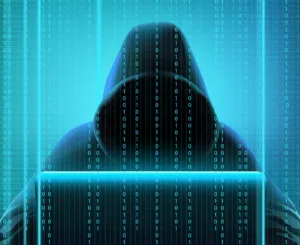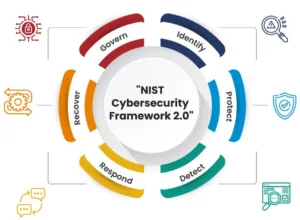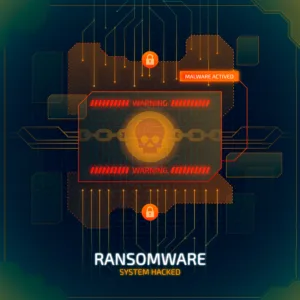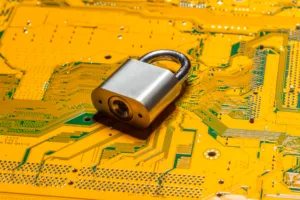
Table of Contents
Join us on a journey through the complex landscape of deep fake and cyber security, unraveling the challenges and embracing the solutions for a resilient digital future.
Introduction – Deep Fake
In the age of rapidly advancing technology, the rise of deep fake technology has opened up new frontiers in creativity, but it also brings forth profound challenges, particularly in the realm of cyber security. As we marvel at the capabilities of synthetic media, we must also confront the potential weaponization of deep fake, raising critical questions about how we can safeguard against its misuse.
The Genesis of Deep Fake: From Entertainment to Cyber Threat
Originally rooted in the realm of entertainment and digital artistry, deep fake technology has evolved beyond harmless face swaps and amusing impersonations. Today, it poses a serious threat to cyber security as malicious actors leverage synthetic media to manipulate perceptions, spread misinformation, and compromise digital security.
Unraveling the Mechanism: How Deep Fake Poses a Cyber security Threat
At the heart of the cyber security challenge posed by deep fake lies its ability to convincingly mimic reality. Using powerful algorithms, deep fake technology can seamlessly integrate fabricated content into our digital landscape. This raises the specter of attackers using synthetic media to impersonate individuals, disseminate false information, or even manipulate financial markets.
Imagine a scenario where a CEO’s voice is replicated flawlessly to give fraudulent instructions, leading to financial losses for a company. Or worse, consider the potential impact on national security if a deep fake video surfaces, seemingly depicting a world leader making provocative statements. The consequences are far-reaching, emphasizing the urgent need for robust cyber security measures.
The Double-Edged Sword: Deep Fake in the Hands of Adversaries
While the creative potential of deep fake is awe-inspiring, its weaponization can have devastating consequences. Cybercriminals and state-sponsored actors are increasingly recognizing the strategic advantage that synthetic media provides. From phishing attacks with hyper-realistic audio messages to the creation of fabricated videos for disinformation campaigns, the arsenal of cyber threats has expanded with the integration of deep fake technology.
The Need for Cyber Vigilance: How Deep Fake Detection Holds the Key
Protecting against the weaponization of deep fake begins with the development and implementation of effective detection technologies. Cyber security experts are investing significant efforts in creating systems that can discern between genuine and synthetic media. These tools often analyze facial inconsistencies, audio irregularities, and other subtle indicators to identify the telltale signs of deep fakery.
However, the cat-and-mouse game between deep fake creators and detection algorithms is dynamic. As detection methods evolve, so do the techniques employed by those seeking to deceive. This highlights the ongoing need for research and innovation in the field of cyber security to stay ahead of emerging threats.
Educating the Cyber Workforce: Building Resilience Against Deep Fake Attacks
In addition to technological solutions, the human element plays a crucial role in defending against deep fake cyber threats. Cyber security professionals need to be well-versed in the nuances of synthetic media, understanding its potential impact and developing strategies to mitigate the risks.
Training programs and educational initiatives are essential for building a cyber workforce that is resilient against deep fake attacks. This includes fostering an understanding of the psychology behind deep fake manipulation, recognizing common attack vectors, and staying informed about the latest developments in synthetic media technology.
Regulating the Deep: Policy Measures to Mitigate Cyber Risks
As deep fake technology blurs the line between reality and fabrication, the need for regulatory frameworks becomes increasingly apparent. Governments and international bodies must work collaboratively to establish policies that govern the ethical use of synthetic media and penalize malicious actors who seek to exploit its potential for cyber threats.
Striking the right balance between fostering innovation and ensuring responsible use is a delicate task, but it is crucial for maintaining the integrity of our digital landscape. Regulations should encompass aspects such as data privacy, digital authentication, and the responsible development and deployment of deep fake technology.
Looking Ahead: Ethical Considerations in the Age of Synthetic Media
As we navigate the complex intersection of deep fake technology and cyber security, ethical considerations come to the forefront. The responsible development and deployment of synthetic media require a collective commitment to ethical standards, transparency, and accountability.
In the ongoing discourse surrounding deep fake and cyber security, it is imperative to engage in a dialogue that involves technologists, policymakers, cyber security experts, and the general public. Only through collaborative efforts can we build a resilient digital infrastructure that safeguards against the weaponization of synthetic media.
Conclusion: Navigating the Cyber Landscape in the Age of Deep Fake
Deep fake technology presents both incredible opportunities and formidable challenges. As we marvel at its creative potential, we must also acknowledge the cyber security risks it poses. The path forward involves a multi-faceted approach – from advancing detection technologies to educating the cyber workforce and implementing robust regulatory frameworks.
In this evolving landscape, vigilance is key. By understanding the mechanics of deep fake, recognizing its potential for weaponization, and collectively working towards cyber security resilience, we can navigate the digital frontier with confidence. As we stand at the intersection of innovation and security, the choices we make today will shape the future of our increasingly interconnected world.
Read more on https://cybertechworld.co.in for insightful cybersecurity related content.




















Your article helped me a lot, is there any more related content? Thanks!
Your point of view caught my eye and was very interesting. Thanks. I have a question for you.
Your point of view caught my eye and was very interesting. Thanks. I have a question for you.